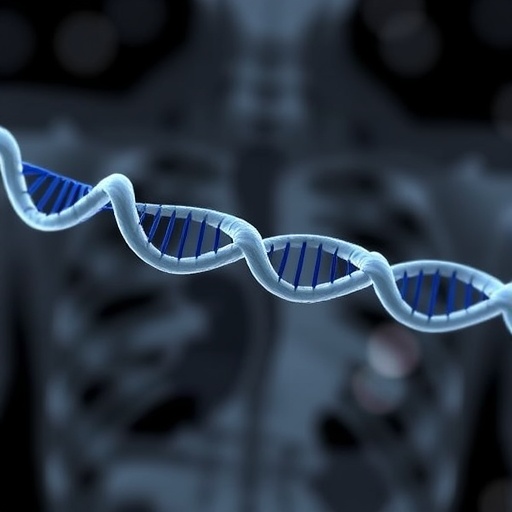In a groundbreaking development that could redefine treatments for chronic granulomatous disease (CGD), researchers have unveiled a highly innovative gene editing strategy aimed at restoring immune function through precise genetic modifications. Published recently in Nature Communications, this pioneering work leverages the power of targeted gene editing combined with near-universal cDNA insertion of the two critical genes, CYBA and CYBB, which are central to the disease’s pathology. This approach could pave the way for durable, potentially curative therapies for CGD, a devastating immunodeficiency disorder that compromises the body’s ability to fight certain infections.
Chronic granulomatous disease is characterized by mutations in genes encoding components of the NADPH oxidase complex, particularly CYBB and CYBA, resulting in defective reactive oxygen species production in phagocytes. This defect renders patients highly susceptible to recurrent and sometimes life-threatening bacterial and fungal infections. Traditional therapies largely focus on symptom management and prophylaxis, with hematopoietic stem cell transplantation as the only curative option but limited by donor availability and transplant-related risks. The need for versatile, safe, and efficient gene therapies remains pressing.
The research team, led by Wolff, Skov, Haslund, and colleagues, has employed an advanced CRISPR-Cas9 based system, fine-tuned for high specificity and efficiency in human hematopoietic stem and progenitor cells (HSPCs). Their method integrates near-universal cDNA cassettes into both CYBA and CYBB gene loci, effectively “replacing” the defective sections with functional counterparts. This precise insertion strategy ensures endogenous gene regulation is maintained, which is critical for physiological expression and function, mitigating risks associated with ectopic or supraphysiologic gene expression.
.adsslot_7LKPvVOhXZ{ width:728px !important; height:90px !important; }
@media (max-width:1199px) { .adsslot_7LKPvVOhXZ{ width:468px !important; height:60px !important; } }
@media (max-width:767px) { .adsslot_7LKPvVOhXZ{ width:320px !important; height:50px !important; } }
ADVERTISEMENT
A particularly striking feature of this approach is its dual-targeting capability. By targeting both CYBA and CYBB, the therapy addresses the heterogeneous genetic mutations encountered in CGD patients, offering a broadly applicable solution rather than a mutation-specific fix. This universality is unprecedented in current gene therapy paradigms for CGD and represents a major leap toward a one-size-fits-all treatment.
Technically, the researchers optimized homology-directed repair (HDR) mechanisms within the HSPCs, achieving impressive gene knock-in efficiencies while preserving the cells’ multipotency and engraftment capacities. The study reports meticulous optimization of donor DNA templates and Cas9 ribonucleoprotein complexes, combined with innovative delivery methods, likely electroporation-based, to ensure minimal off-target effects and cell toxicity. These advancements underscore the translation potential of this platform, balancing editing precision with clinical feasibility.
Functional validation of the edited cells revealed restored NADPH oxidase activity, as confirmed through dihydrorhodamine (DHR) flow cytometry assays and superoxide production measurements. Edited HSPCs differentiated successfully into mature phagocytes expressing functional enzyme complexes, revealing a reversal of the hallmark immune defects of CGD. Notably, in vitro pathogen killing assays demonstrated restored microbial clearance, strikingly mirroring the physiological immune response observed in healthy controls.
Further in vivo studies, including xenotransplantation into immunodeficient murine models, validated the long-term engraftment and polyclonal reconstitution of edited HSPCs. Importantly, these murine models showed significantly improved resistance to infections, providing compelling preclinical evidence that the edited cells retain crucial immune functionality over time. This durability is a cornerstone for curative gene therapy and highlights the translational promise of this research.
Safety assessments revealed minimal off-target editing or genotoxic side effects, addressing one of the most critical challenges in gene editing therapeutics. The authors deployed unbiased genome-wide off-target analysis, possibly including GUIDE-seq or similar techniques, to ensure genomic integrity post-editing. The fidelity of their editing strategy enhances the therapy’s safety profile, an essential consideration for eventual clinical application in pediatric and adult CGD patients.
In addition to scientific rigor, the study contemplates practical considerations crucial for clinical translation. The researchers discuss scaling the manufacturing workflow for HSPC isolation, editing, and reinfusion, emphasizing protocols compatible with current good manufacturing practices (cGMP). By aligning their approach with regulatory and production standards, the authors demonstrate foresight that may accelerate the transition from bench to bedside.
Ethically, this approach mitigates concerns tied to random viral vector insertions, which have historically posed risks of insertional mutagenesis and oncogenesis in gene therapy trials. The targeted nature of CRISPR-Cas9 mediated cDNA insertion into endogenous loci represents an elegant solution to preserve genomic context and reduce aberrant outcomes. Such precision editing enhances patient safety and aligns with evolving regulatory frameworks favoring gene-editing-based interventions.
The implications of this universal and targeted gene insertion technique extend beyond CGD. By providing a proof-of-concept for insertion of full-length cDNAs in relevant disease loci within HSPCs, this technology could be adapted for other genetic immunodeficiencies and hematologic diseases. The modular nature of donor cDNA templates and precision editing tools opens avenues for customizing curative treatments across a wide spectrum of monogenic disorders.
From a patient perspective, this therapy promises transformative outcomes. By restoring the immune system’s pathogen-killing ability from the “ground up,” patients may experience freedom from recurrent infections, decreased hospitalizations, and improved quality of life. Furthermore, the near-universal nature of this treatment strategy could drastically reduce waiting times for therapies, circumventing the need for matched donors and complex conditioning regimens.
While challenges remain, including ensuring equitable access, cost reduction, and robust long-term safety data, the trajectory set by this study is unambiguous. Targeted gene editing combined with near-universal cDNA insertion emerges as a formidable candidate in the next generation of precision medicine for CGD and beyond. The clinical landscape may soon witness a paradigm shift from symptom management to rectification at the genetic source.
Overall, Wolff et al.’s meticulous engineering of targeted gene edits in CYBA and CYBB represents a milestone in gene therapy for immunodeficiencies. By merging state-of-the-art molecular tools with a deep understanding of disease pathophysiology, this research transcends traditional boundaries, offering hope for truly curative therapies. The fusion of high-efficiency editing, safety, and broad applicability encapsulates the future promise of personalized genetic medicine.
As the gene editing revolution unfolds, studies like this serve as compasses guiding both scientific inquiry and clinical implementation. The integration of targeted cDNA insertion techniques into therapeutic pipelines is poised to elevate the standard of care, translating decades of molecular biology innovation into tangible patient benefits. Future clinical trials inspired by these findings may well redefine the lives of thousands suffering from CGD worldwide.
In conclusion, the synergy of precise CRISPR-Cas9 engineering and universal cDNA repair templates heralds a new era in immunodeficiency treatment. The approach delineated by Wolff and colleagues underscores not only the technical ingenuity behind modern gene therapy but also the altruistic goal of curing diseases formerly deemed untreatable. This landmark study is a testament to how cutting-edge science can chart a hopeful course for patients faced with formidable genetic disorders.
Subject of Research: Gene editing strategies for chronic granulomatous disease, specifically targeting CYBA and CYBB genes in hematopoietic stem and progenitor cells.
Article Title: Targeted gene editing and near-universal cDNA insertion of CYBA and CYBB as a treatment for chronic granulomatous disease.
Article References:
Wolff, J.H., Skov, T.W., Haslund, D. et al. Targeted gene editing and near-universal cDNA insertion of CYBA and CYBB as a treatment for chronic granulomatous disease. Nat Commun 16, 7475 (2025). https://doi.org/10.1038/s41467-025-62738-2
Image Credits: AI Generated
Tags: advancements in immunotherapy strategiescDNA therapy for immunodeficiency disorderschronic granulomatous disease treatment innovationsCRISPR-Cas9 applications in gene therapyCYBA and CYBB gene modificationsdurable therapies for CGDgene editing for chronic granulomatous diseasehematopoietic stem cell transplantation alternativesreactive oxygen species production in phagocytesrestoring immune function through gene therapysafe gene therapies for genetic disorderstargeted gene editing techniques





